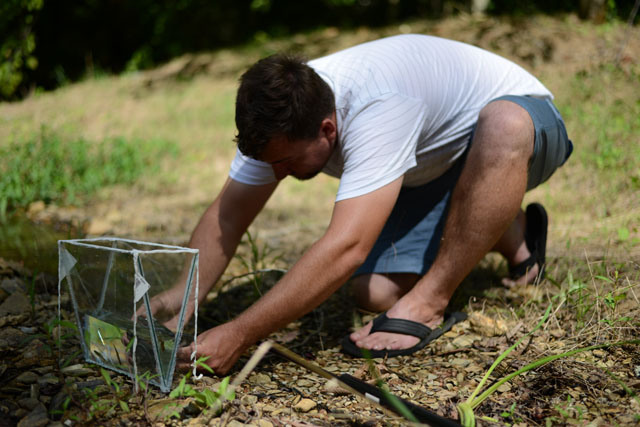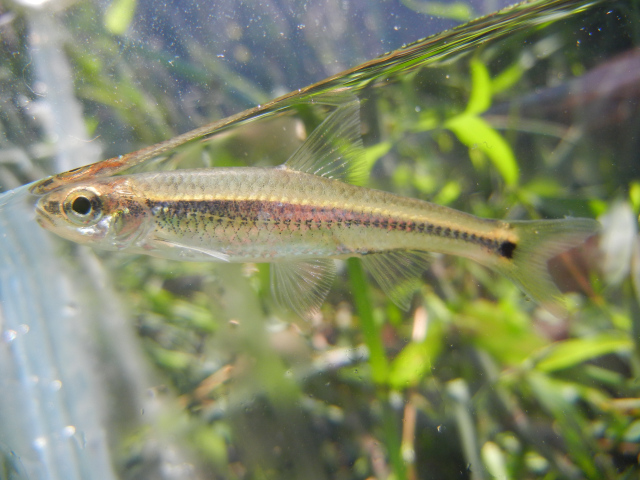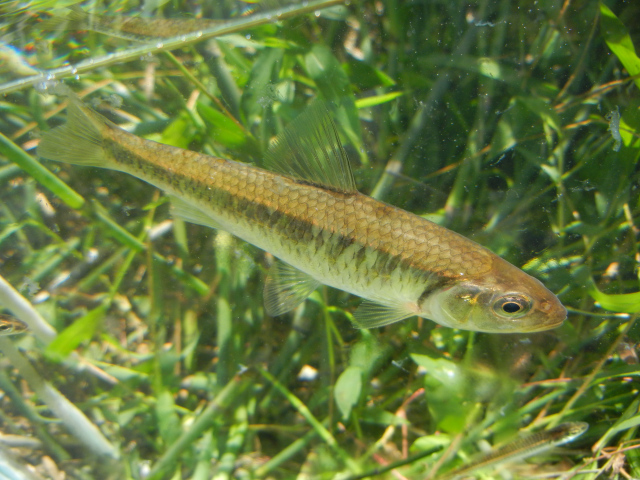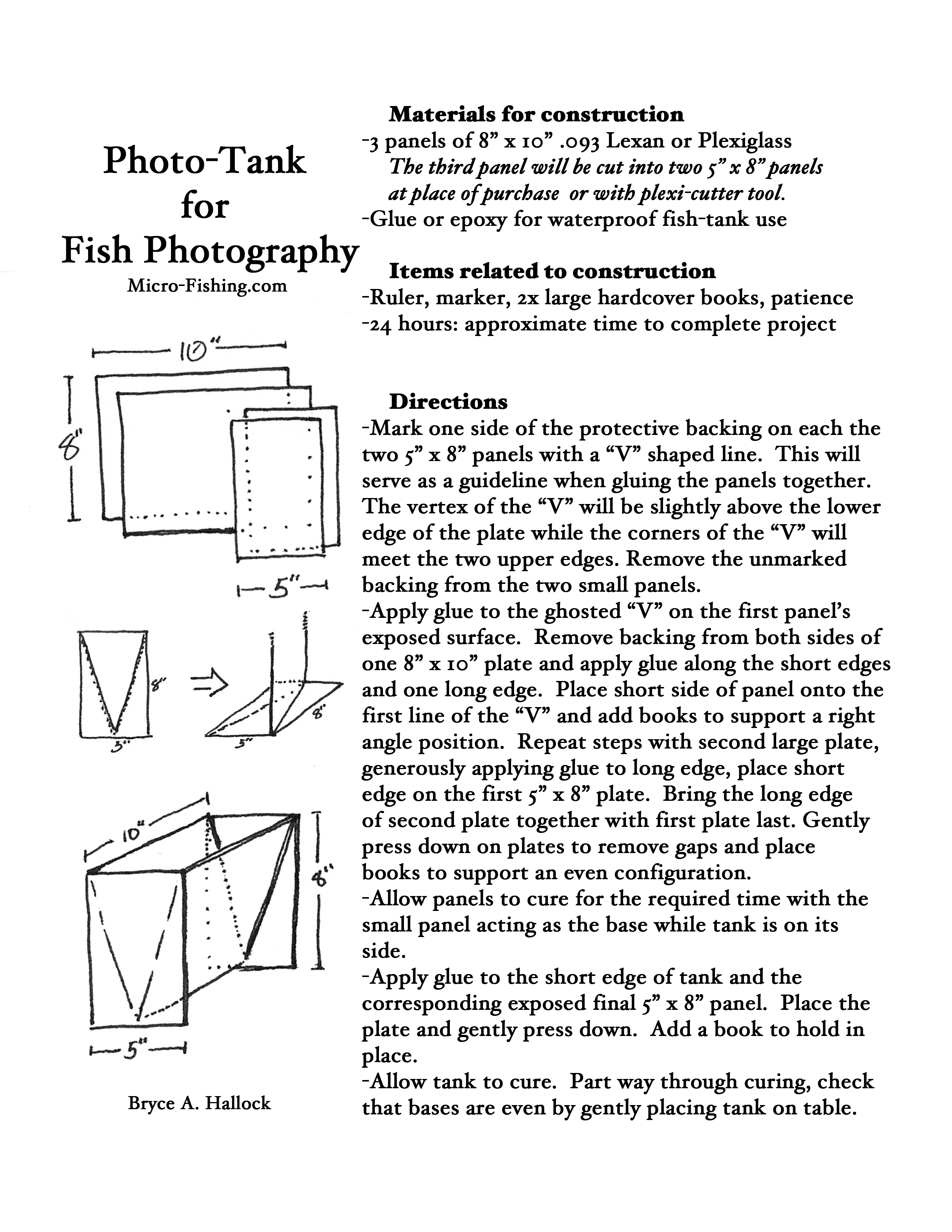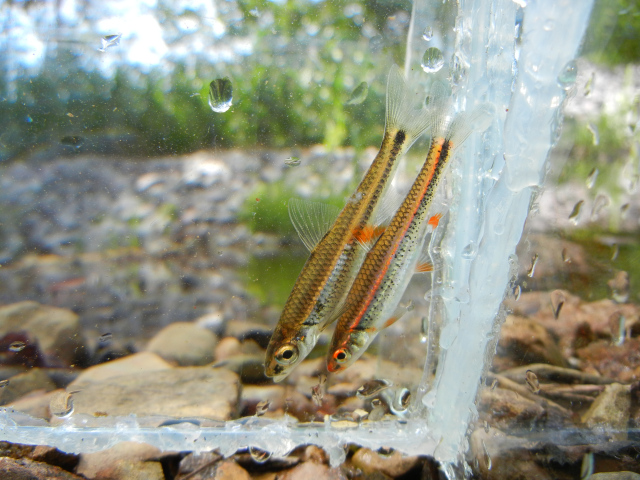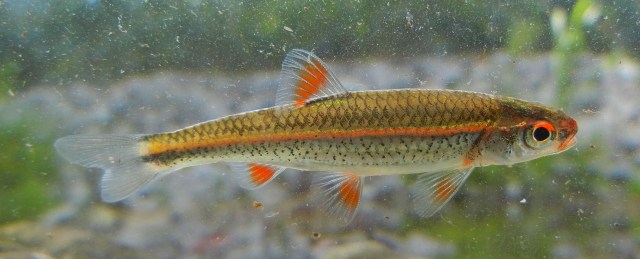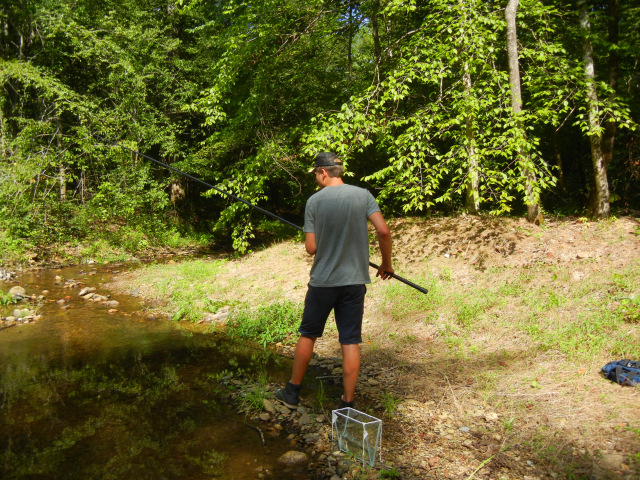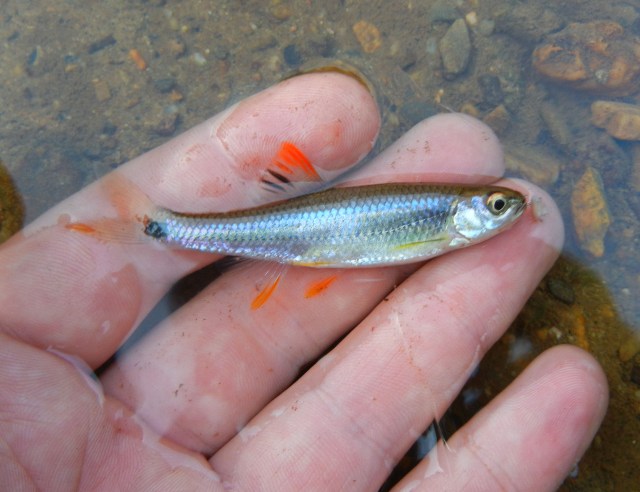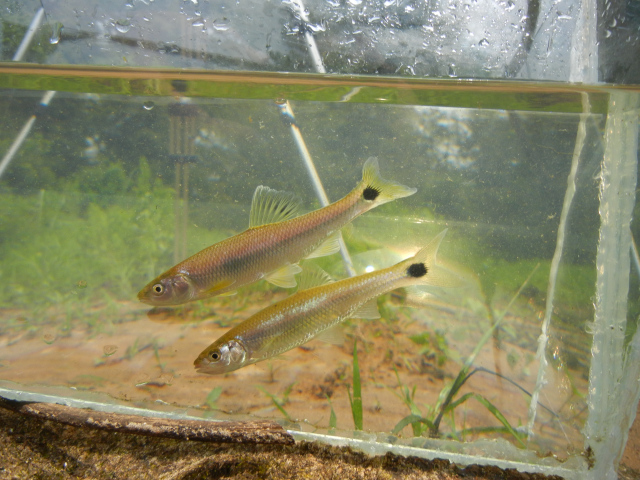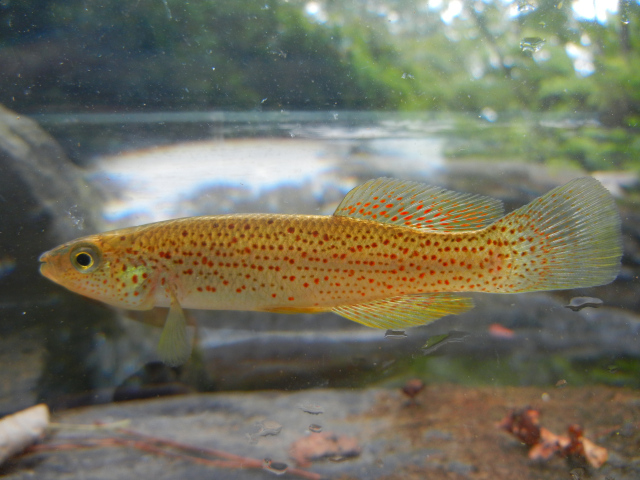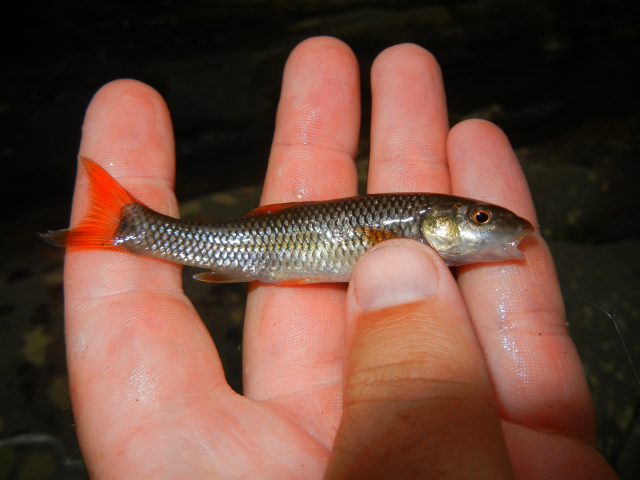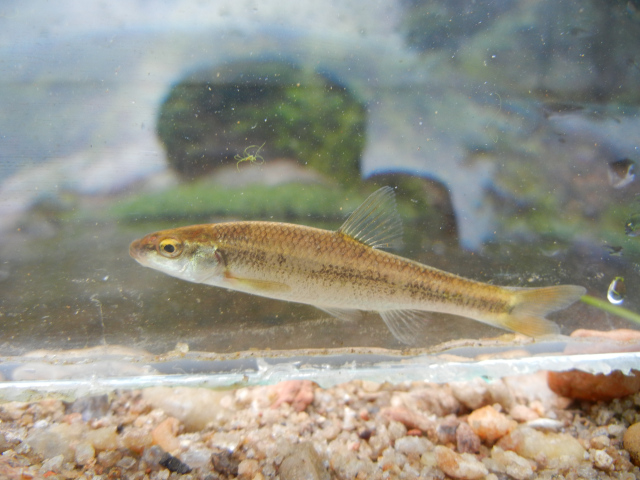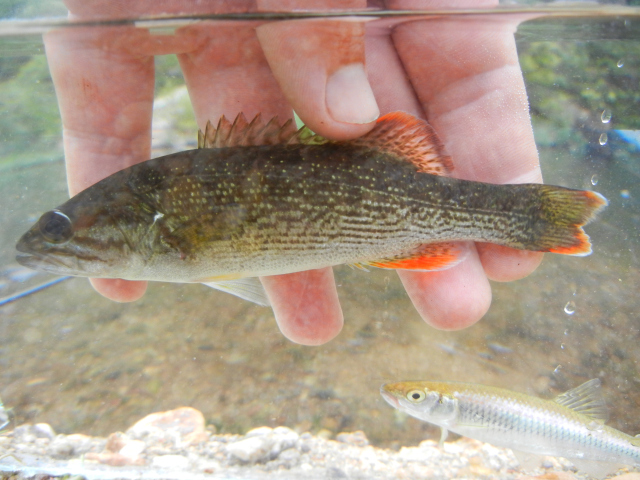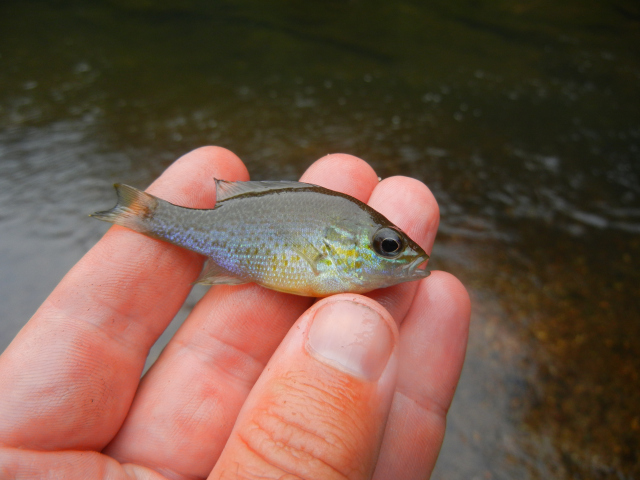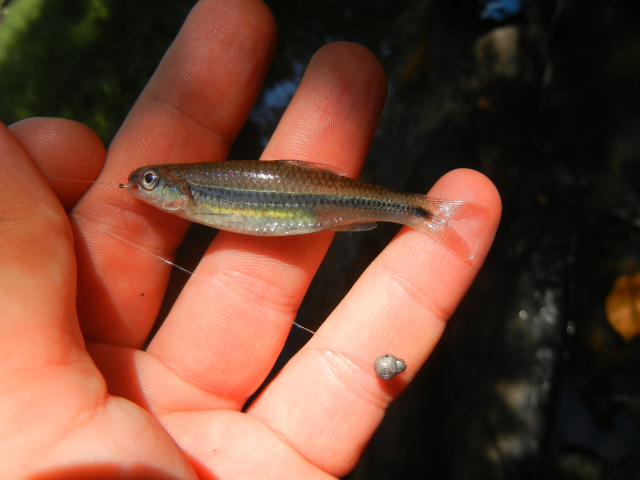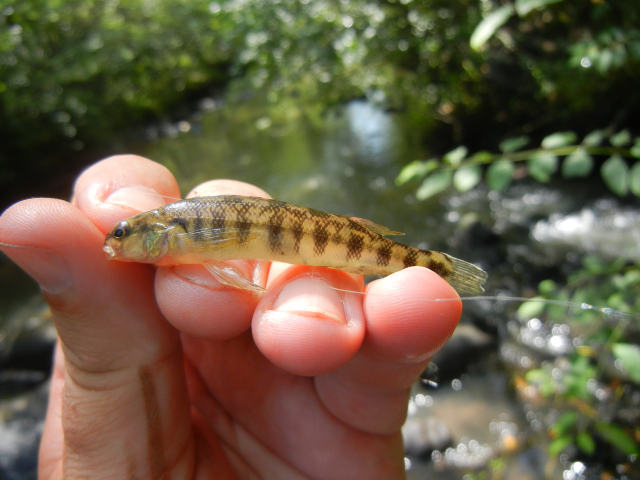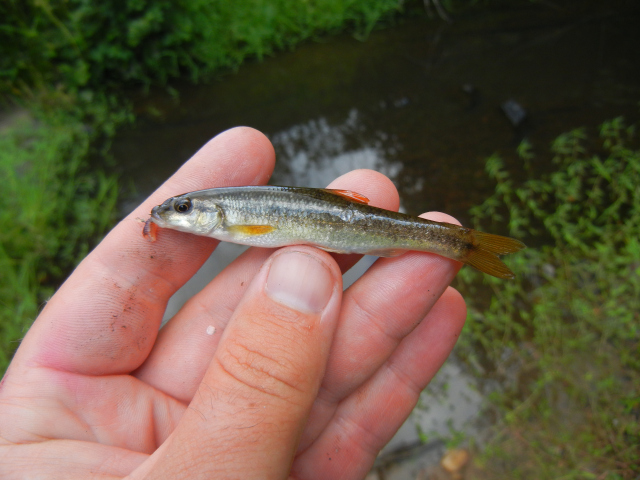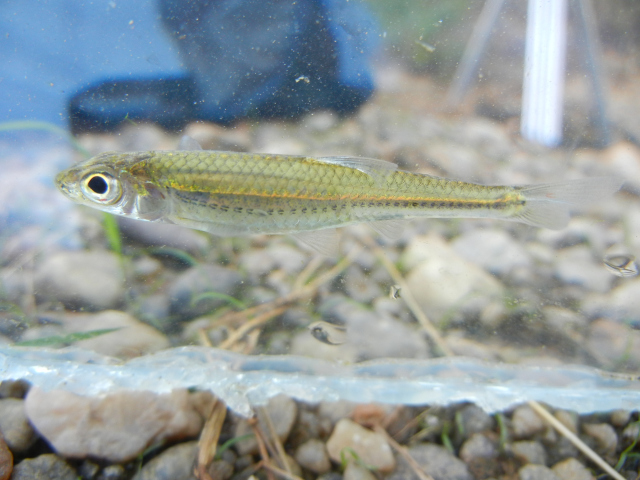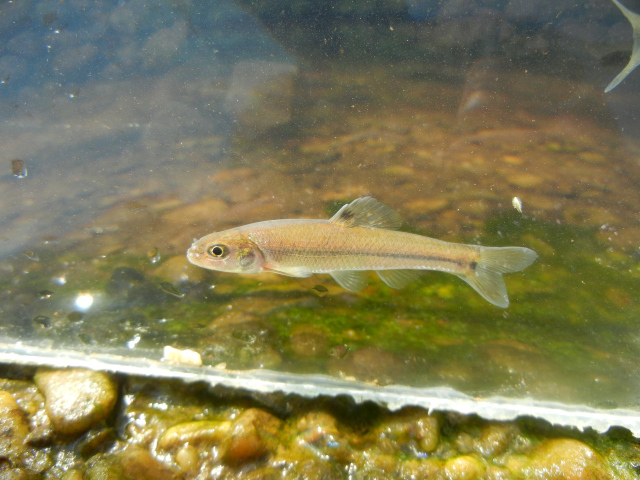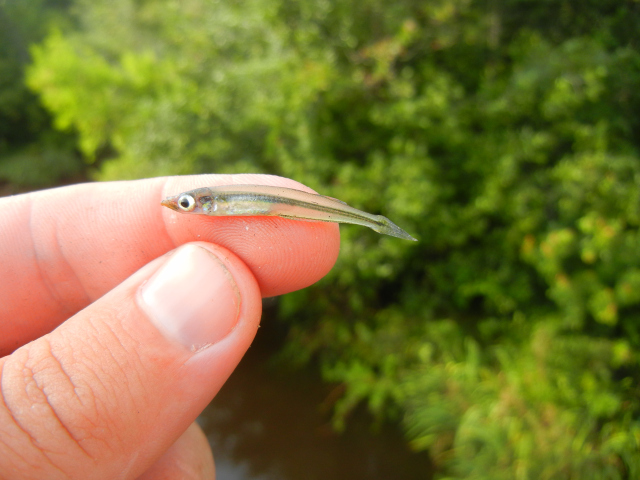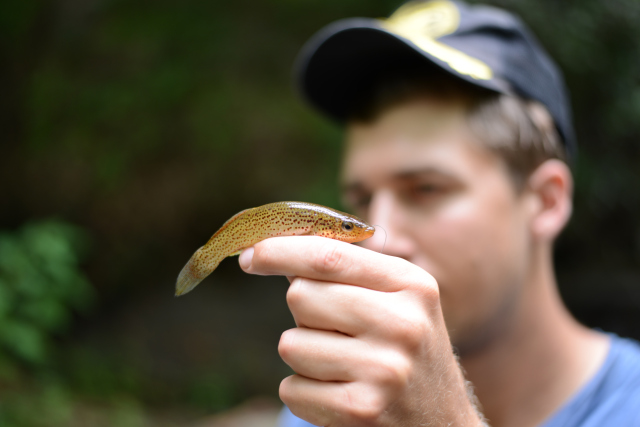by Bryce Hallock
During mid August 2012, my friend, Miciah and I took a long weekend to micro fish northern and central Georgia in the Chattahoochee and Mobile river basins. The goal of this trip was to photograph new species micro fish using a photo-tank we had recently constructed.
The photo-tank we built used a “V” shaped chamber with supportive side panels. We found that angling the glass helped to reduce reflections from the photographer or other bright objects outside the tank. A circular polarized lens filter can also prevent reflection but is not necessary. Most of the following photographs are not polarized.
The above species, Coosa Shiner, is a common micro fish we encountered in the upland creeks of the Coosa River system.
The photo-tank is a “must have” for micro fishing as it allows greater accuracy in species identification. The photo-tank we built used glass held together with aquarium grade silicone. Using glass is superior to plexiglass for image clarity and scratch resistance but is very dangerous and fragile in the field. During construction of the tank I cut myself several times and so added a silicone bead around all the edges of the plates. Eventually, the glass began chipping and duck tape replaced the silicone for safety. I recommend building photo-tanks with plexiglass. It would be far too easy to murder yourself with a shattered glass fish tank on a slippery creek bank.
We found the Rainbow Shiner (right) in a small clear stream in the foothills of the Chattahoochee National Forest. It is similar to, but far more colorful than a Coosa Shiner.
Holding the micro fish out of the water can be difficult for identification because their fin rays and color cannot be seen. If the fish is placed flat on the water surface, as pictured above, the fins can be more easily seen.
The Blacktail Shiner is the most common fish you will catch. They are the plague of the south. This micro fish seemed to dominate ever type of water whether creek or river.
Pictured above is a Blacktail Shiner with spawning colors. The photo-tank helps identify these fish.
This Snail bullhead was caught by dropping a worm at the edge of a large flat rock. The unseen fish took the bait by using, what appeared to be, a vacuum like action from beneath the rock. It has a small mouth like a walking catfish so small sharp hooks work great.
The orientation of the sun, or light source, when photographing fish in a tank is important. I prefer to have more light behind the photo-tank “back-lighting” the fish boosting color and transparency. In my opinion, using a flash or sunlight on the same side as the camera tends to blow out colors in the fish and flatten the image. Ideally, the fish should be photographed in shade or on a cloudy day.
Bluehead Chub, as seen above, shows a red tail that is vivid in many juvenile chubs and shiners.
The Bluefin Stoneroller lives exclusively in the Chattahoochee system and occupies the same habitats as other stone rollers. This image is an example of what happens when the background is darker than the foreground. The camera side of the photo-tank should be kept dark to prevent reflection.
The glass photo-tank started to chip apart so we added duck tape to help it, and ourselves, survive the trip.
This Blackbanded Darter was very aggressive. It is the most common Darter in Georgia, Florida, and Alabama. This fish was caught below a very large, and scenic, mill. Looking for names on a road map that have “mill” in the title often lead to interesting feature changes in the river.
Stonerollers have a very small mouth for the size of their head and are difficult to hook even with micro tackle.
Identification Resources: Alabama and Mobile Basin, Fishes of

